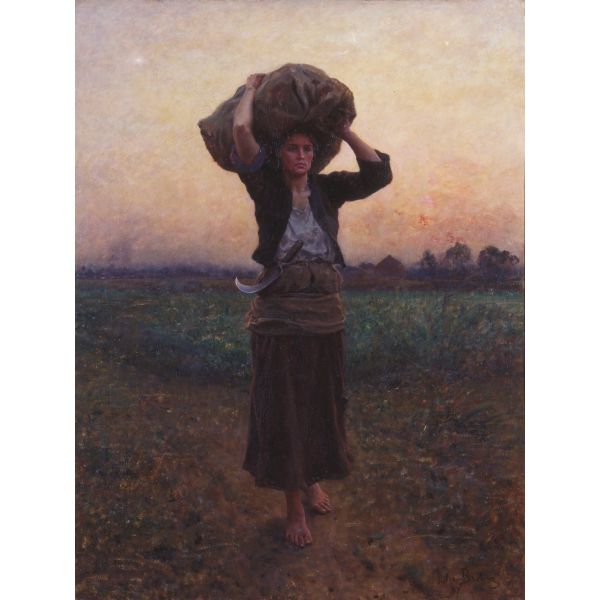Jules Breton "The Shepherd's Star" Print
$12.95
Availability:
In stock
SKU
005323
Jules Breton (French, 1827-1906), 'The Shepherd's Star,' Oil on canvas, 1887. Gift of Arthur J. Secor, 1922.41
Barefoot and carrying a heavy sack of potatoes on her head, a young peasant woman returns from the fields at twilight as Capella, the shepherd's star, rises over her shoulder. The model was an agricultural worker from Courrières, artist Jules Breton's native village in the Artois region of northern France. However, the painter gives the figure a classical monumentality and timelessness that removes her from any commentary on her social position. As one critic wrote of The Shepherd's Star in 1888, "Imagine that she carried on her back a sheaf of wheat instead of a sack of potatoes, and then she could be the personification of harvesting. She would be a modern Ceres [goddess of summer]."
Unlike the more frank, unsentimental images of workers by French realist artists like Jean-François Millet, Breton's paintings present a romanticized view of the French peasant as the heroic embodiment of a traditional, idyllic, and noble way of life. This agrarian lifestyle, however, was rapidly disappearing under the pressures of the Industrial Revolution, prompting a sense of nostalgia for what was being lost to modernity.
Print Size: 19" x 28"
Barefoot and carrying a heavy sack of potatoes on her head, a young peasant woman returns from the fields at twilight as Capella, the shepherd's star, rises over her shoulder. The model was an agricultural worker from Courrières, artist Jules Breton's native village in the Artois region of northern France. However, the painter gives the figure a classical monumentality and timelessness that removes her from any commentary on her social position. As one critic wrote of The Shepherd's Star in 1888, "Imagine that she carried on her back a sheaf of wheat instead of a sack of potatoes, and then she could be the personification of harvesting. She would be a modern Ceres [goddess of summer]."
Unlike the more frank, unsentimental images of workers by French realist artists like Jean-François Millet, Breton's paintings present a romanticized view of the French peasant as the heroic embodiment of a traditional, idyllic, and noble way of life. This agrarian lifestyle, however, was rapidly disappearing under the pressures of the Industrial Revolution, prompting a sense of nostalgia for what was being lost to modernity.
Print Size: 19" x 28"
Write Your Own Review




